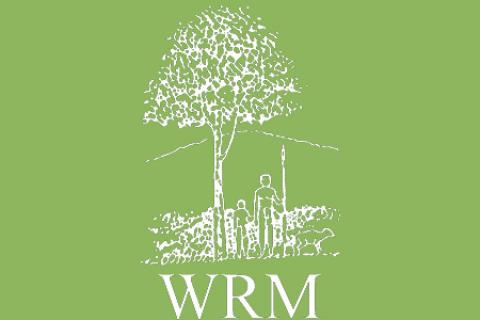Plant pollination takes place in different ways. One way is done by bees, butterflies, humming birds and bats. Another type of pollination is caused by wind blowing through plants that have their reproductive cells in open flowers. This happens with coniferous trees (for example, pines). For fecundation to be effective, these trees have to produce an enormous amount of pollen that the wind blows away and distributes, passing it from plant to plant and covering great distances.
Bulletin articles
In a world characterized by information, there are issues that have been made so invisible that the great majority of people do not know that they exist. This is the case of the Indigenous Peoples living in voluntary isolation. Most are not even aware that some of these peoples have not yet been contacted by the predominating society and in other cases, have resisted integrating it in spite – or as a result of – having been contacted.
The Mbya Guarani are an ancient forest people with their roots in the Amazon. In Misiones, a province in the northeast of Argentina, they have 74 communities and a total population of approximately 3,000 people. Their culture is as rich as the biodiversity of the Paranaense forest that they have always used and protected.
Indigenous Baka number 30-40,000 and live in the southern and southeastern areas of Cameroon. They are associated with, among other local communities the Bagando Bakwele, Knonbemebe, Vonvo, Zime and Dabjui farmers. About 4,000 Bagyeli and Bakola live in the southwest, and are associated with Bulu, Ngoumba, Fang and Bassa. Most Baka, Bagyeli and Bakola still rely on hunting and gathering to secure their livelihoods, and even though some also cultivate annual crops, often on the lands of these Bantu patrons, the majority still rely on the forests.
The Mbendjele Yaka "Pygmies" live in northern Congo-Brazzaville. Mbendjele claim shared ancestry with other forest hunter-gatherer groups in the region such as the Baka, Mikaya, Luma or Gyeli. The Mbendjele calls all these groups Yaka people. Outsiders frequently refer to these groups as Pygmies, and occasionally members of these groups do too. They are forest-living hunter-gatherers considered the first inhabitants of the region by themselves and their farming neighbours, the Bilo.
In the first place, it is important to clearly define what we are talking about when we refer to peoples or populations in “voluntary isolation.” This term and similar ones (such as “separate,” “isolated,” “autonomous”) attempt to describe “a situation or a historical context.” The background or basis they all have in common is that they seek to define peoples (ideally) or populations (perhaps closer to reality) that have little or no systematic contact with Western agents (in general commercial companies or missionaries).
The Nukak are a nomadic people from the Colombian Amazon, officially contacted in 1988. The present population is estimated at 390 people, distributed among 13 local groups, located in the inter-fluvial area between the Middle Guaviare and the High Inírida. Nukak as a tongue is understood by the Kakua or Bara from the Colombian Vaupes and both are classified as part of the Maku-Pinave linguistic family.
Huaorani culture and society is shaped by their will to self-isolation. Very little is known about their past, except that they have for centuries constituted nomadic and autarkic enclaves fiercely refusing contact, trade and exchange with their powerful neighbours, be they indigenous or white-mestizo colonists. Ever since their tragic encounter with North American missionaries in 1956, the Huaorani have held a special place in journalistic and popular imagination as "Ecuador's last savages".
The Ayoreo live in a zone of their ancestral territory called Amotocodie. Modern maps show it as an extensive area of virgin forest with the geographic coordinates 21º 07’ S and 60º 08’W marking its centre, some 50 km to the south of Cerro Leon. They amount to some 50 people, subdivided into various groups. They approach but rarely, a watering place on some farm to drink water and perhaps a farm worker may have seen them from afar. Sometimes, white hunters find their trail in the forest or holes in trees where they have harvested honey.
In 1990, the Peruvian state established the Kugapakori/Nahua Reserve to protect the lives, rights and territories of indigenous peoples in South East Peru avoiding, or strictly limiting their contact with national society. Despite safeguarding these territories on paper, since its creation the Reserve has been continually threatened by illegal logging and two years ago it was opened up for extraction of natural gas as part of the Camisea Gas Project (See “Camisea gas project undermines the rights of indigenous peoples”, WRM bulletin No. 62, September 2002).
Outsiders are invading the reserve of the isolated Jarawa tribe in the Andaman Islands, India, and stealing the game on which they depend for food. There are also increasing reports of Jarawa women being sexually exploited. Despite a Supreme Court order to the islands’ administration to close the highway which runs though the reserve, it remains open, bringing disease and dependency.
In the Banten region of western Java, Indonesia, exists a small-scale indigenous community that has to a large extent been able to avoid the advancement of globalization, modern technology and other influences of the outside world, including environmental degradation. The Baduy people are a reclusive tribal group that has lived a relatively undisturbed, traditional lifestyle in a closed society for more than 400 years until the recent encroachment of economic and social pressures from the outside world.
